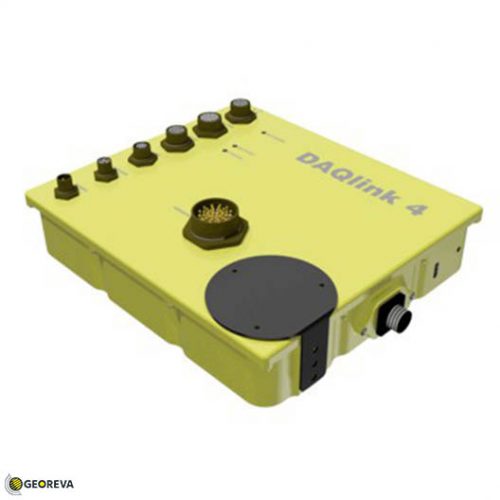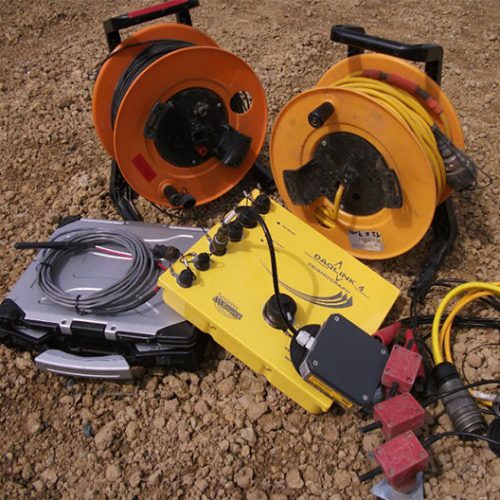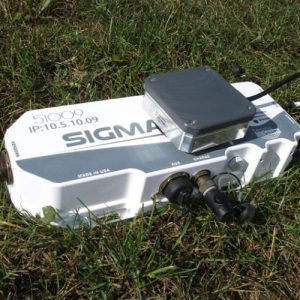DAQlink 4 Seismograph
The Distributed DAQlink4 System is the combination of a standard DAQlink4 Seismograph and internal, high-speed, network extenders. Using inexpensive twisted pair telephone cable, these network extenders will send triggering times and receive seismic data from other DAQlinks. These cable links can send reach 10,000 ft, or three kilometers in length.
The entire system is connected to a computer which controls the seismograph network and stores the acquired seismic data. This computer can be simultaneously providing Quality Control as the project is acquired. The final data files can be stored in SEG-2, SEG-D, SEG-Y, ASCII or MiniSEED format.
It may operate as Stand-Alone Seismograph, operate as an Acquisition System, Use a sledgehammer and hammer switch
The many features are included: Passive Monitoring, True Continuous Recording, Use Cellular Modem for Remote Data Collection, GPS for timing and location, Use LTA (Long Term Average) or STA (Short Term Average) to detect events, Correlator, and many more.
Description
Technical Specifications
DAQlink4 is the fourth generation of portable seismograph systems designed by Seismic Source. It can be configured as a stand-alone monitoring system, a refraction system or a distributed seismic reflection system. Vscope software controls the seismograph, providing acquisition control, data QC and file storage. This seismograph utilizes industry standard Ethernet for command, control, and fast data file transfer.
System Features
Cutting-Edge Performance
1 to 24 channels per seismograph node
High-Speed 24bit ADC – up to 64,000 sps
Wide Bandwidth – DC to 20 KHz
Low Distortion – 0.00008% THD @ 500 sps
Wide Dynamic Range – >124 dB @ 500 sps
Low Noise – less 0.2 µV RMS @ 500 sps
Multiple Time Synchronization Modes
GPS Clock Discipline for Autonomous Recording
VHF/UHF Radio for Underground Use
Or synchronize multiple DAQlink via cable
Multiple Trigger Modes
Trigger on hammer switch for shot acquisition
Trigger using GPS time for noise monitoring
Trigger using LTA and STA for event monitoring
Two trigger circuits available, one for standard and a second for low-voltage inputs
Multiple Data Storage Methods
Time Break ou Marteau (switch).
16 Gbytes internal memory card standard
External mounted, USB-compatible Memory Plug for data backup and transfer
Ethernet connection for fast data transfers and remote data storage
Built-in Ethernet Network
Use network to configure seismograph and monitor acquisition
Compatible with cables, Wi-Fi and Cellular Data
Internal FTP server for external data access






